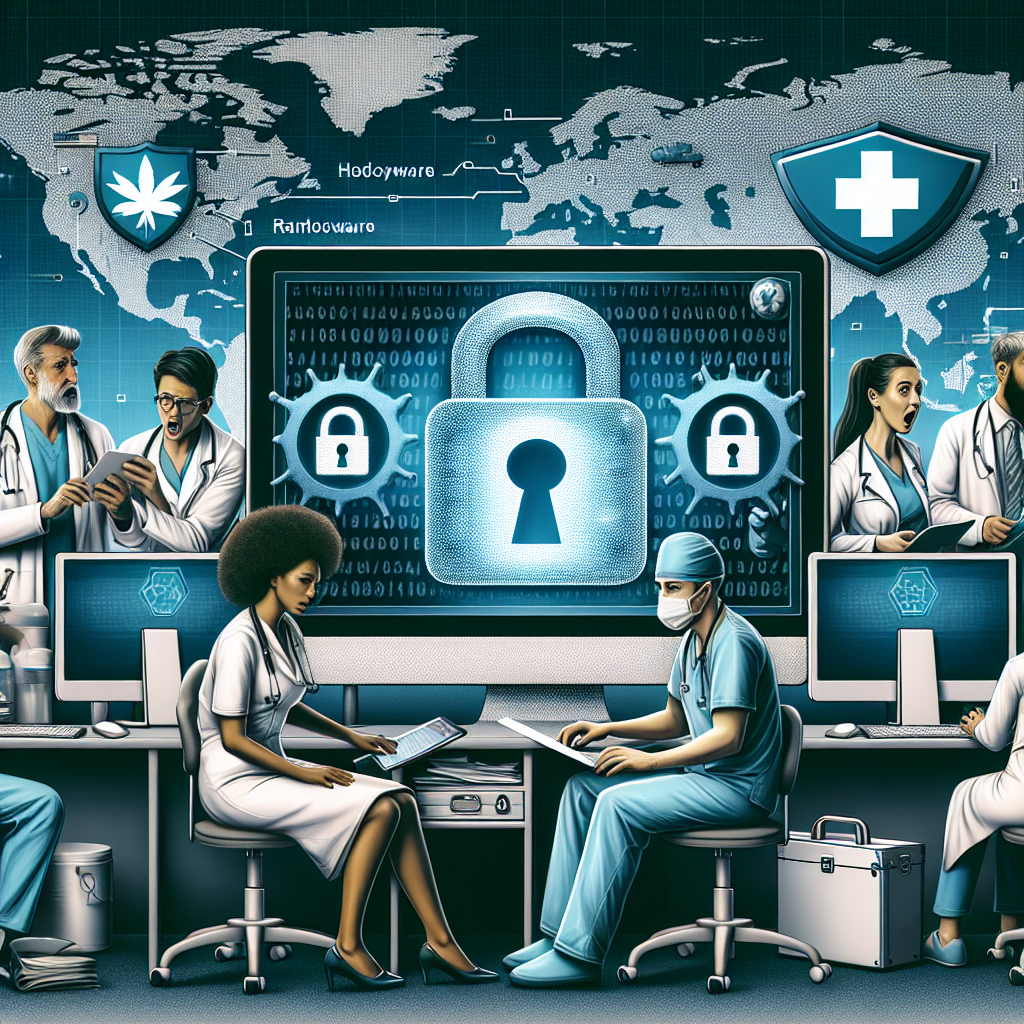Ransomware Strikes: Georgia Hospital and Colorado Pathology Services Targeted

In recent years, ransomware attacks have become a significant threat to various sectors, with healthcare being one of the most vulnerable. The recent ransomware strikes on a Georgia hospital and Colorado pathology services highlight the growing menace of cyber threats in the healthcare industry. This article delves into the intricacies of these attacks, their implications, and the broader context of ransomware in healthcare.
The Anatomy of a Ransomware Attack
Ransomware attacks are a form of cybercrime where malicious software encrypts a victim’s data, demanding a ransom for its release. These attacks have evolved over the years, becoming more sophisticated and targeted. Understanding the anatomy of a ransomware attack is crucial to comprehending its impact on organizations.
Typically, a ransomware attack begins with a phishing email or a compromised website. Once the malware is introduced into the system, it spreads rapidly, encrypting files and locking users out of their systems. The attackers then demand a ransom, often in cryptocurrency, to decrypt the data.
In the case of the Georgia hospital and Colorado pathology services, the attackers likely used similar tactics. The healthcare sector is particularly vulnerable due to its reliance on digital records and the critical nature of its services. The attackers exploit these vulnerabilities, knowing that healthcare organizations are more likely to pay the ransom to restore their operations quickly.
- Phishing emails as entry points
- Rapid spread of malware within networks
- Encryption of critical data
- Demand for ransom in cryptocurrency
The impact of such attacks is profound, affecting not only the targeted organizations but also their patients and stakeholders. The disruption of services can lead to delayed treatments, compromised patient data, and significant financial losses.
Case Study: Georgia Hospital Under Siege
The ransomware attack on a Georgia hospital serves as a stark reminder of the vulnerabilities in the healthcare sector. This case study explores the specifics of the attack, its immediate impact, and the hospital’s response.
The attack began with a phishing email that bypassed the hospital’s security measures. Once inside the network, the ransomware quickly encrypted patient records, appointment schedules, and other critical data. The hospital was forced to shut down its systems, leading to the cancellation of appointments and a halt in services.
In response, the hospital’s IT team worked tirelessly to contain the attack and assess the damage. They collaborated with cybersecurity experts and law enforcement agencies to investigate the breach and attempt to recover the data. Despite their efforts, the hospital faced significant challenges in restoring its systems and ensuring patient safety.
The financial impact of the attack was substantial, with costs associated with data recovery, system upgrades, and potential ransom payments. Additionally, the hospital faced reputational damage, as patients and stakeholders questioned the security of their data.
- Phishing email as the attack vector
- Encryption of patient records and critical data
- Collaboration with cybersecurity experts and law enforcement
- Financial and reputational impact
This case study highlights the need for robust cybersecurity measures in healthcare organizations. It underscores the importance of employee training, regular system updates, and comprehensive incident response plans.
Case Study: Colorado Pathology Services Targeted
The ransomware attack on Colorado pathology services further illustrates the pervasive threat of cybercrime in healthcare. This case study examines the attack’s specifics, its impact on operations, and the organization’s response.
The attack was initiated through a compromised website that employees accessed, inadvertently downloading the ransomware. The malware quickly spread through the network, encrypting pathology reports, patient data, and billing information. The organization was forced to halt its operations, affecting patient care and delaying diagnoses.
In response, the pathology services team worked with cybersecurity experts to contain the attack and begin the recovery process. They implemented additional security measures, such as multi-factor authentication and enhanced network monitoring, to prevent future breaches.
The financial implications of the attack were significant, with costs related to data recovery, system upgrades, and potential ransom payments. The organization also faced reputational damage, as patients and partners questioned the security of their data.
- Compromised website as the attack vector
- Encryption of pathology reports and patient data
- Implementation of enhanced security measures
- Financial and reputational impact
This case study emphasizes the importance of proactive cybersecurity measures in healthcare organizations. It highlights the need for regular security audits, employee training, and comprehensive incident response plans.
The Broader Context: Ransomware in Healthcare
The ransomware attacks on the Georgia hospital and Colorado pathology services are not isolated incidents. They are part of a broader trend of increasing cyber threats in the healthcare sector. This section explores the reasons behind this trend and its implications for the industry.
Healthcare organizations are prime targets for ransomware attacks due to their reliance on digital records and the critical nature of their services. The attackers exploit these vulnerabilities, knowing that healthcare organizations are more likely to pay the ransom to restore their operations quickly.
The financial impact of ransomware attacks on healthcare organizations is significant. According to a report by Cybersecurity Ventures, the global cost of ransomware is expected to reach $20 billion by 2021. Healthcare organizations face additional costs related to data recovery, system upgrades, and potential legal liabilities.
- Reliance on digital records and critical services
- Financial impact of ransomware attacks
- Potential legal liabilities
The reputational damage caused by ransomware attacks is also significant. Patients and stakeholders may lose trust in the organization’s ability to protect their data, leading to a loss of business and potential legal action.
To combat the growing threat of ransomware, healthcare organizations must invest in robust cybersecurity measures. This includes regular security audits, employee training, and comprehensive incident response plans. Additionally, organizations should collaborate with cybersecurity experts and law enforcement agencies to stay informed about the latest threats and best practices.
Preventive Measures and Future Outlook
As ransomware attacks continue to pose a significant threat to healthcare organizations, it is crucial to implement preventive measures to mitigate the risk. This section explores the steps that healthcare organizations can take to protect themselves from ransomware attacks and the future outlook for cybersecurity in the industry.
One of the most effective ways to prevent ransomware attacks is through employee training. Healthcare organizations should educate their employees about the risks of phishing emails and compromised websites, as these are common entry points for ransomware. Regular training sessions can help employees recognize and avoid potential threats.
Another critical preventive measure is regular system updates and security patches. Healthcare organizations should ensure that their systems are up-to-date with the latest security patches to protect against known vulnerabilities. Additionally, organizations should implement multi-factor authentication and enhanced network monitoring to detect and prevent unauthorized access.
- Employee training on phishing and compromised websites
- Regular system updates and security patches
- Multi-factor authentication and enhanced network monitoring
The future outlook for cybersecurity in healthcare is challenging, as cyber threats continue to evolve and become more sophisticated. However, by investing in robust cybersecurity measures and collaborating with experts, healthcare organizations can mitigate the risk of ransomware attacks and protect their patients’ data.
In conclusion, the ransomware attacks on the Georgia hospital and Colorado pathology services highlight the growing threat of cybercrime in the healthcare sector. By understanding the anatomy of a ransomware attack, examining case studies, and exploring preventive measures, healthcare organizations can better protect themselves from future attacks. The key takeaway is the importance of proactive cybersecurity measures, employee training, and collaboration with experts to safeguard patient data and ensure the continuity of critical services.





